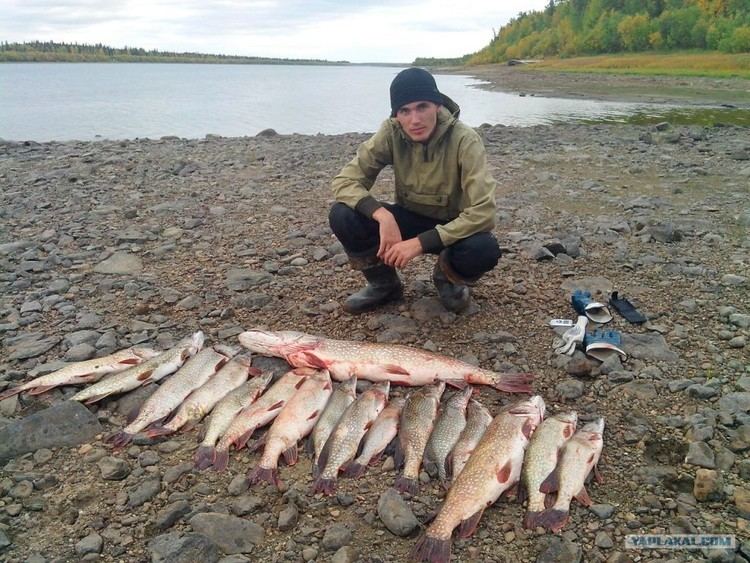- left Lyapin, Vogulka Length 754 km Country Russia | - right Lesser Sosva, Tapsuy Discharge 860 m³/s | |
 | ||
- average 860 m/s (30,371 cu ft/s) | ||
The Severnaya Sosva (Russian: Северная Сосьва) is a river in Khanty–Mansi Autonomous Okrug, Russia, which drains the northern Ural Mountains into the lower Ob River.
Contents
Map of r. Severnaya Sosva, Khanty-Mansi Autonomous Okrug, Russia
Geography
The river and its tributaries are basically T-shaped. The Khulga and Lyapin Rivers flow south for about 201 kilometres (125 mi) parallel to the Urals while the main Northern Sosva flows about 201 kilometres (125 mi) northward. The united rivers then flow east southeast about 160 kilometres (100 mi) almost to the Ob near Igrim and then flow north about 80 kilometres (50 mi) before joining the Ob at Beryozovo. Its headwaters are just east of the headwaters of the Pechora River on the other side of the Urals and somewhat north of the headwaters of the southeast-flowing Pelym River.
The Severnaya Sosva River is 754 kilometres (469 mi) long, and the area of its basin is 98,300 square kilometres (38,000 sq mi). The average discharge of the river is 860 cubic metres per second (30,000 cu ft/s). It is frozen between November and April and floods (mostly snowmelt) from May to September. Like many rivers in the West Siberian Plain, it has an extensive flood plain with marshes and meanders. In spring the area near the Ob often floods. The channel width sometimes approaches 1 kilometre (0.6 mi) and the flood plain 40 kilometres (25 mi). The river is navigable by ships in the lower region.
There are two Malaya Sosva rivers. The larger flows north to join the Northern Sosva near Igrim. The other joins the Bolshaya Sosva to form the Northern Sosva.
Trade route
There was some ill-documented Russian trade in the area before the Russian conquest of Siberia. After about 1593 the Northern Sosva was one of the main routes into Siberia (for the others, see Verkhoturye). The route ran from the Pechora River, up the Shchugor River, over either of two passes and down the Sosva to the Ob River and the fur-rich Mangazeya region. By the late 17th century the fur trade declined and most trade shifted south to Verkhoturye and some north to the Usa River.
